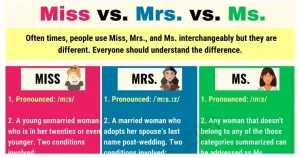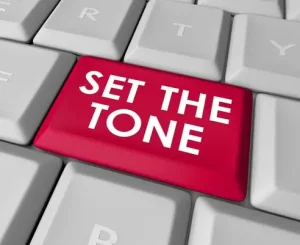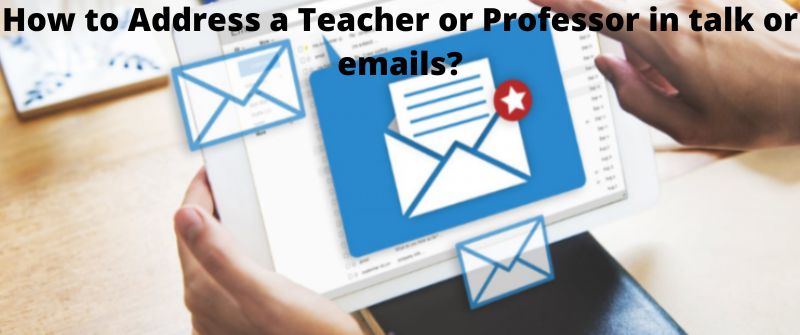Have you always struggled with maintaining etiquette when communicating with your teacher or professor? The only way to solve this is by learning different ways how to address teachers in face-to-face communication and through emails.
This article will focus on how to address teachers or professors, both male and female, and things to consider when communicating with them.
How to Address a Teacher?
Teachers are vital assets to students and learning how to relate with them should be a top priority. Addressing a teacher properly can lead to a positive student-teacher relationship that makes the academic life of the student easy.
To address a teacher well, you need to use the correct title, use their names, be respectful and consider the age difference between you and him or her. Also, convey your message in a formal manner or informal methods if the context is not official. Finally, and do not forget to thank your professors for their time with you.
Let us discuss these ways in detail in the following section:
1. Using the correct name
Knowing your teacher’s name and using it to start a conversation is a way of showing respect. Also, it shows the teacher that you pay attention to details.

Calling the teacher by their name sparks a conversation between you and the teacher.
If you are not sure about the name of the teacher, do not use it because it can be disrespectful and start a conversation on the wrong note. In emails, do not use the email as their name, use their name.
2. Be respectful
Respectful language is important when addressing your teacher or professor. Respectfulness also comes from the body language you use in face-to-face communication with the teacher.
Also, the choice of words should show respect if you are sending an email. When you have to interrupt the teacher to start a conversation always begin with the phrase “excuse me please.”
3. Use the right title
Titles are very important when addressing teachers. If your teacher is a Ph.D. holder including the title “Dr” is very important. This not only show respect for their achievement but also proves vital in starting a meaningful conversation.
In emails, the titles of the instructor should appear in the salutation part. Using plane names appears to be rude and arrogant because they have worked for years and risen through the ranks to earn titles and deserve to be recognized.
4. Consider the age
Age mainly determines the conversation between your teacher or professor. The way you address young teachers is not the same way you address older professors.
The choice of words is also important. For example, married female teachers should always be referred to as “Mrs” and unmarried should be referred to as “Miss.”
5. Be formal
Addressing teachers using proper English that they can understand is a good way of communicating with them. All kinds of jargon in the modern era should be avoided. Using words such as “bless up” or “Wassup” when addressing a teacher can be disrespectful.
6. Relay necessary information
Do not make a conversation with teachers for too long because they are always busy. Go straight to the point and avoid coming up with points that do not relate to the purpose of your conversation with your teacher.
In addition, convey your message in a nice but short way. Emails should not be longer than 4 sentences. Anything more than that should be considered for face-to-face conversations.
7. Thank them for their time
If you are having a face-to-face conversation with your teacher and maybe you were asking for something and the teacher have given you a proper response, it is only respectful that you thank them. It is good to always appreciate them for sparing their time and listening to you.
How to Address Male Teachers
Male teachers should always be addressed as “Sir” or “Mr.” This applies only to those that do not have special titles such as professor, or Doctor.
The name that should follow the title is the last name of the teacher. This is a tradition that should not be ignored because it is believed to show respect.
The tradition is popular in American public schools. It holds that calling teachers by their first name is disrespectful and should not be allowed.
How to Address Female Teachers
Female teachers especially in the pre-tertiary level schools who have not earned special titles are referred to as Ms, Mrs, or Miss.

When using these titles students should be extremely careful because using the wrong one can be offensive to the teacher.
The title “Miss” should be used to address unmarried female teachers. This title should then be followed by the teacher’s last name to make it more respectful.
Also, the title “Mrs” should be used to refer to married and windowed women. They should then be followed by their last name or their spouse’s name.
The third title is “Ms” which is used to refer to female teachers when it is not clear whether they are married or not. This title applies to female teachers who do not want to expose their marital status.
Note that most female teachers have their preferences. Therefore, always take note of the title they prefer. If not sure always ask students that have interacted with the teacher.
10 Things to Consider when Communicating with Teachers
Communication with teachers should be taken seriously because they are our seniors and maintaining proper student-teacher relationships is good for a student’s academic life. when communicating with teachers you should consider the following.
1. Follow traditions
In America when addressing a teacher, it is tradition to use his or her last name. This is a sign of respect. It is usually seen as awkward or disrespectful when students address teachers by their first names.
2. Use the right words
Always avoid the use of vocabulary and jargon when addressing a teacher. Always make the conversation simple for them to understand. Not using hard terms that teachers cannot understand shows your willingness to have a conversation
3. Use official titles
Always address teachers when starting a conversation using their official titles. This includes special titles that teachers have worked hard for. Professors and Ph.D. holders should be addressed in their respective titles.
4. Get the pronunciation of names correctly
It is very awkward calling a teacher using a mispronounced name. This mostly applies to teachers of color who carry their native names.
Always make sure that you get the pronunciation of their last name right. If you don’t know how to do it ask for help before approaching the teacher
5. Go straight to the point
Teachers are busy people. When communicating with them do not start giving stories. Inform them of what you want directly from the start.
Teachers will always want to maintain professionalism and will shoot down any talks that do not entail academics.
6. Be respectful
The purpose of meeting your teacher is to have a conversation and not a confrontation. Always respect the ideas or answers you get from teachers even if they are contrary to your expectations.
7. Use the right tone

When conversing with teachers it is good that you avoid being rude. Use a direct and sincere tone to easily convict the teacher to continue listening to you.
Also, do not whisper to the teacher. It is disrespectful. It is good to note that you should show respect in classroom to your teachers because they are in that position as your seniors and educators.
8. Listen
When you are communicating with teachers make sure you listen to what they have to say. Do not interrupt them in between their responses. It is disrespectful and can easily cut a long conversation short.
9. Make an appointment
For teachers who are extremely busy, make sure that you book an appointment. Do not start conversations with such teachers directly because they will end up not listening to you
10. Avoid too much humor
When communicating with teachers you are not on a comedy show. If you have to crack a joke, make sure that it is respectful and that the teacher is ok with it.
11. Follow Regulations
Some schools usually have rules that govern how students should communicate with teachers. Always make sure that you follow the rules of the teacher-student relationship to the latter to avoid inappropriate situations or punishments.


